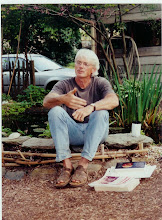The gardens at Greensboro Montessori School are extensive but their origins were humble. A small 5th grade garden was all we had the first year. We made it in a day. Soon the principal asked for a school plan. Now 250 students have weekly sessions. I could not do it without my 6 college interns. They do most of the teaching. I’ve worked with one of them, Walter, for over 8 years, first as a freshman at UNCG and then as the Spanish teacher at Montessori. He is also a Permaculture designer and is in charge of the 4th-8th grade gardening. In the summer he prefers to travel to Central America and work on farms. He himself wants to work with the earth, to be a farmer.
He is not alone. Aubrey, an art major, Jenny a graduate in anthropology, and Gabriela whose senior paper at Guilford College was on school gardening curriculum are my reliable helpers and constant inspiration. Their depth of interest in the land has taken me by surprise. Farming and school gardening was not in the picture for college students 10 years ago, but obviously they are ready and willing and need our support. Perhaps they are attracted as I am by the pleasure of good work, the responsiveness of the earth and the dream of a sustainable society. The garden is their teacher. And they are with us tonight.
Gardens are popping up all over the place: school gardens, community gardens, front and backyard edible landscaping. What is this desire? Is it for good food, for a connection to the earth, for a fresher human community, for beauty? Yes, all these things.
One very unique public school, the Newcomer’s School, gathers young people new to America and without the English language. For one year 3rd through 12th graders, speaking 31 different languages, immerse themselves in English only. After that year, they enter the regular public system.
We began the Peace Garden. It went easily because a young man, Natan, took the reins and led the program. The students planted their cultures into the American soil: peppers from the Americas, okra from Africa, or watercress from SE Asia. That first year they won a city-wide prize and sold their food at the farmer’s market. Now Gabriela heads it up. Her first group this fall came from six different countries and the collards they planted brought them all together. She did a masterful job of simplifying the task of planting and getting everyone to participate.
What does all this mean? Why do we garden in schools? Gathering, gardening and eating are the basis of human culture. Our participation in the food web or the Web of Life is our most basic activity. As cultural beings, we do not eat simply to refuel themselves. No, gathering, gardening and eating are rituals, planned activities, community forming activities, tool using activities. They describe who we are and what we value. At times we abstain from eating, at other times, we feast. Plants heal us; animals help us.
In conjunction with the earth we formed a human culture. Our interaction with the land and our cuisine says who we are. Or at least that is how it has been until the recent past. In a wink of an eye, basically the 20th century, we forgot all this. We became “industrial eaters” and substituted a ready-made set of abstract food products and farming methods that bypassed and obscured both nature’s way and our own. Processed food and fast food teaches us nothing, it separates us, it basically distracts us like an endless commercial.
I think we garden in school and community gardens, we go to farmer’s markets, and we eat together in order to rediscover who we are and to enjoy our home, the earth. We ground ourselves. We heal ourselves. We slow down and share ourselves with others. These activities make us human.
Subscribe to:
Post Comments (Atom)

No comments:
Post a Comment